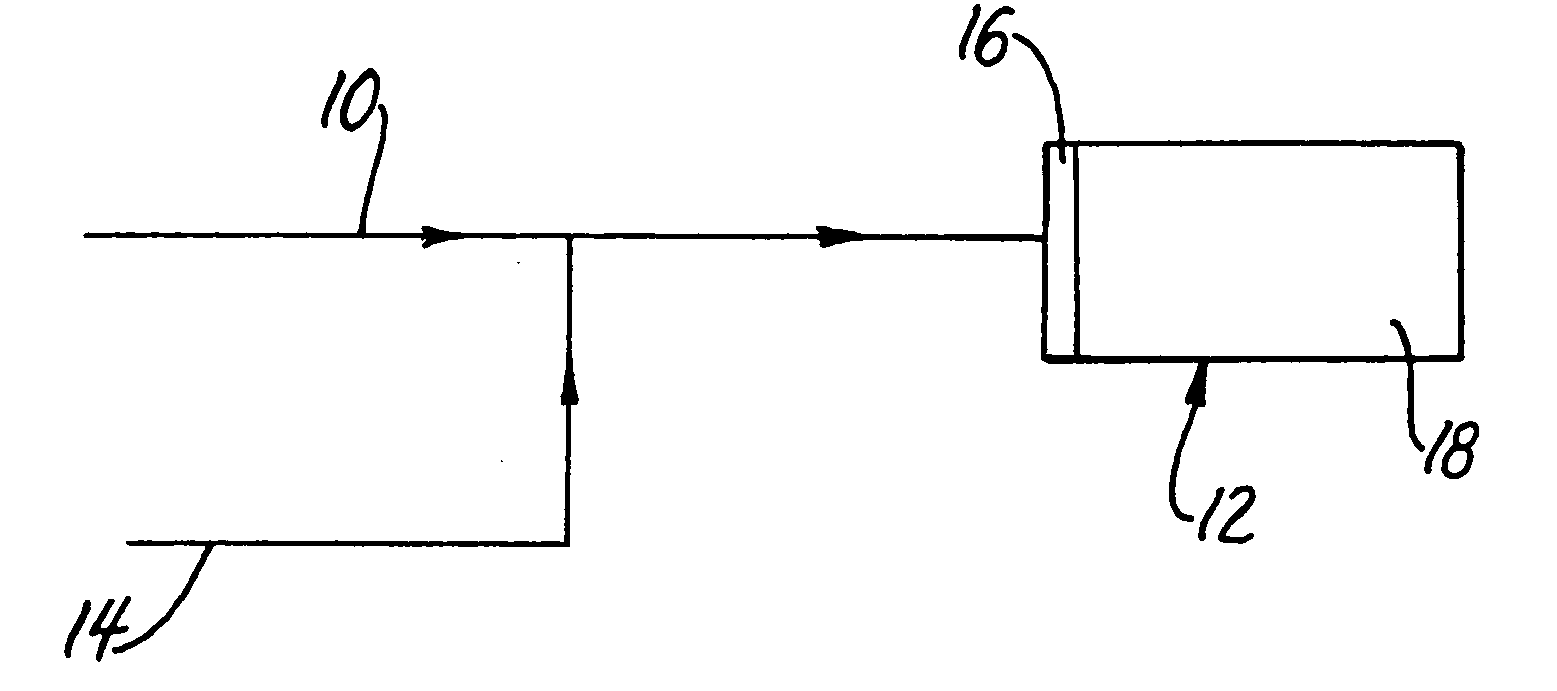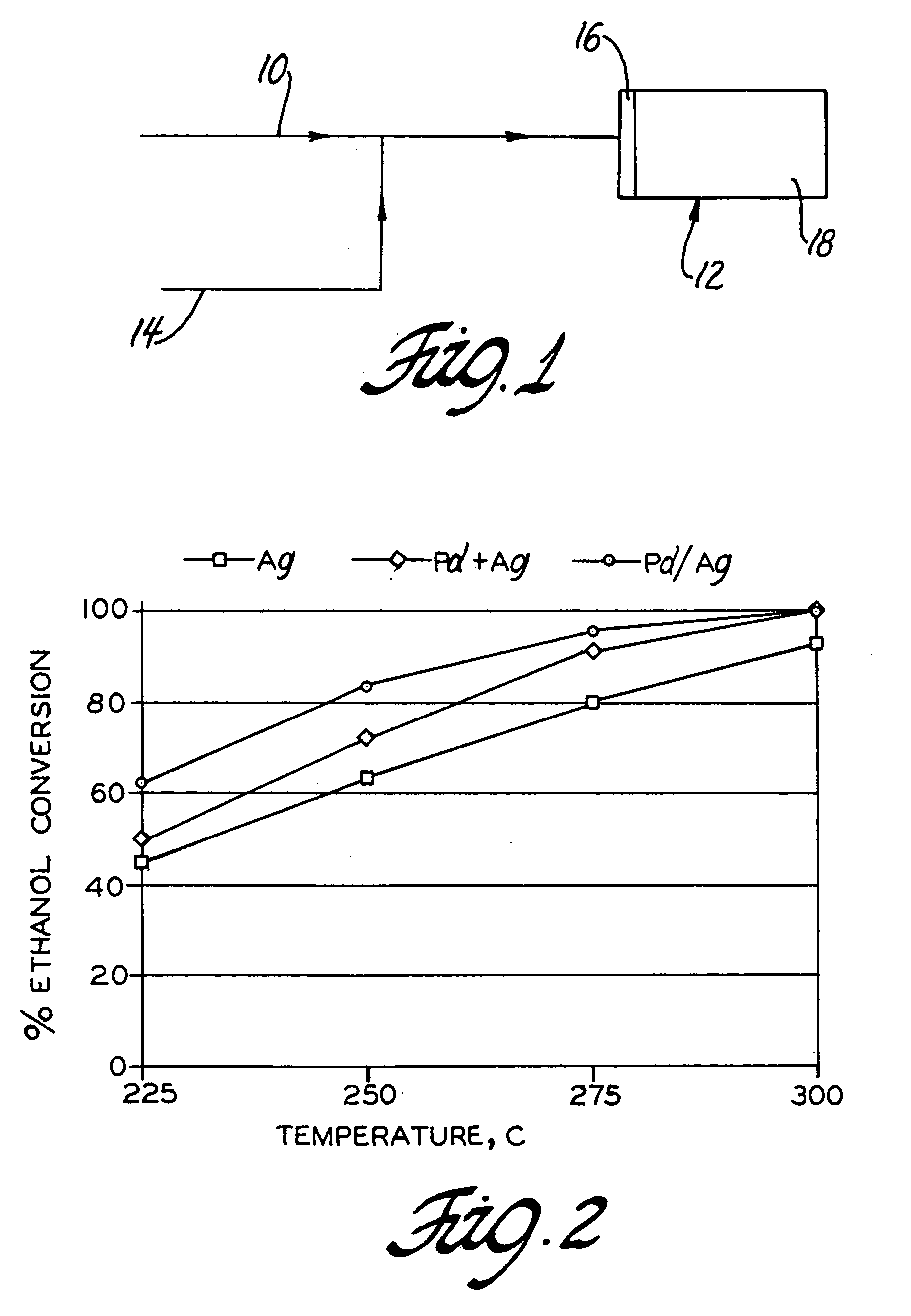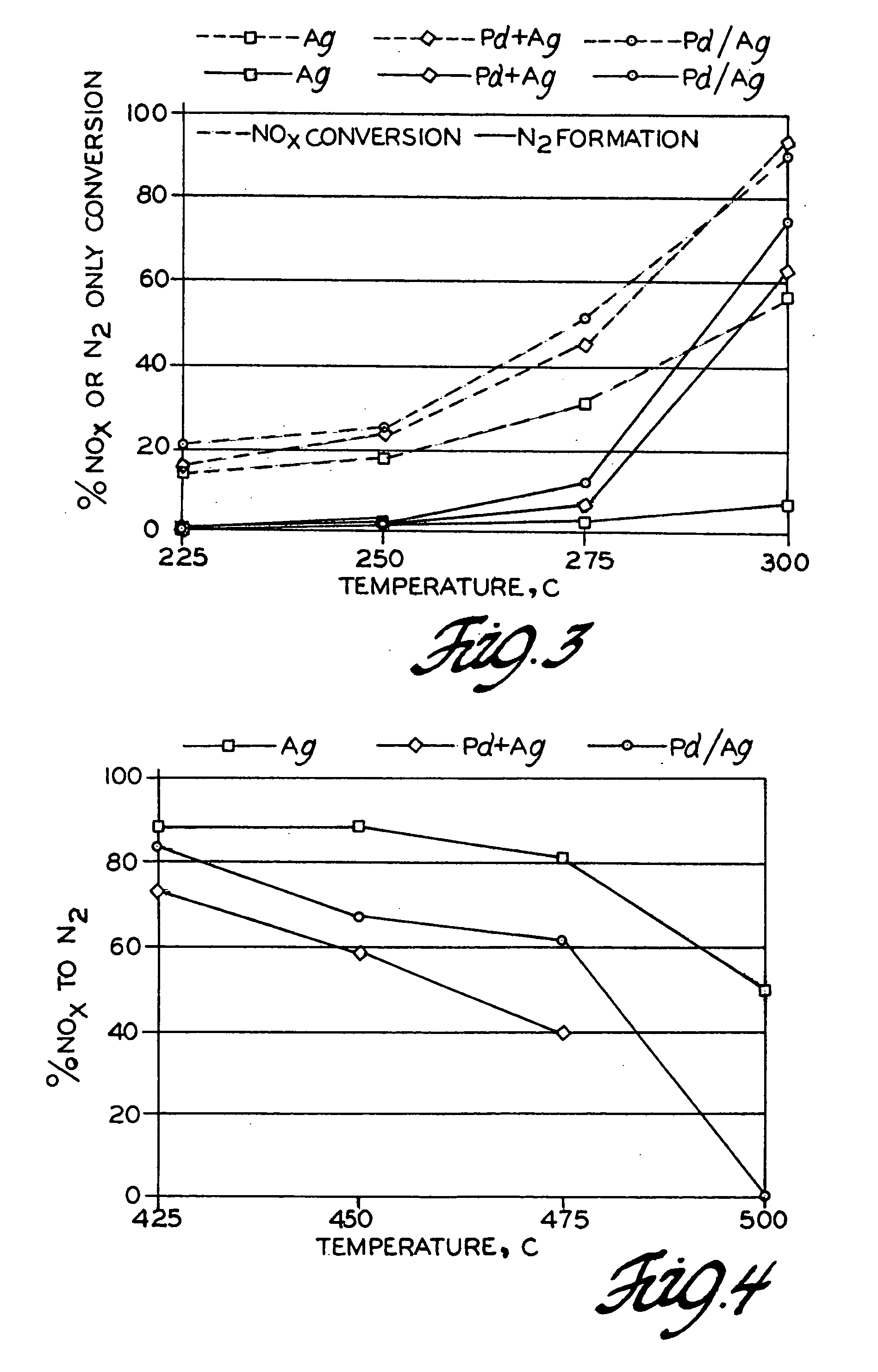Reducing NOx emissions with a staged catalyst
a staged catalyst and nox technology, applied in the direction of arsenic compounds, silicon compounds, separation processes, etc., can solve the problems of limiting the availability of hc for nosub>x/sub>, reduction at high temperatures, etc., to promote the hc oxidation reaction, enhance certain reaction steps, and improve the performance of scr catalysts
- Summary
- Abstract
- Description
- Claims
- Application Information
AI Technical Summary
Benefits of technology
Problems solved by technology
Method used
Image
Examples
Embodiment Construction
[0016] The process of this invention is for hydrocarbon enhanced SCR of the NOx content of exhaust from a lean-burn internal combustion engine. In the case of some above-stoichiometric A / F engines, such as diesel engines, it may be preferred to remove particulate matter from the exhaust to prepare the exhaust for the two-stage catalytic process of this invention. If the amount if engine-out hydrocarbons is deficient for the reduction of NOx, hydrocarbon gasses, such as from a fuel storage, may be added to the exhaust stream as indicated in FIG. 1 to assure sufficient HC content for the SCR conversion of NOx in accordance with this invention.
[0017] In FIG. 1, exhaust stream 10 from a lean-burn engine, not shown, is directed to a dual-stage oxidation-reduction catalytic reactor 12. In applications in which the engine is operated at a relatively high air-to-fuel mass ratio the hydrocarbon content of the exhaust may be lower than is suitable for enhancing catalytic reduction of NOx. Ac...
PUM
| Property | Measurement | Unit |
|---|---|---|
| temperatures | aaaaa | aaaaa |
| temperature | aaaaa | aaaaa |
| exhaust gas temperatures | aaaaa | aaaaa |
Abstract
Description
Claims
Application Information
 Login to View More
Login to View More - R&D
- Intellectual Property
- Life Sciences
- Materials
- Tech Scout
- Unparalleled Data Quality
- Higher Quality Content
- 60% Fewer Hallucinations
Browse by: Latest US Patents, China's latest patents, Technical Efficacy Thesaurus, Application Domain, Technology Topic, Popular Technical Reports.
© 2025 PatSnap. All rights reserved.Legal|Privacy policy|Modern Slavery Act Transparency Statement|Sitemap|About US| Contact US: help@patsnap.com



